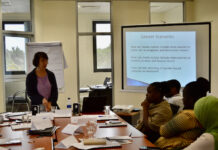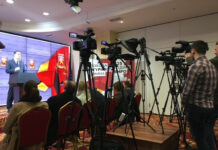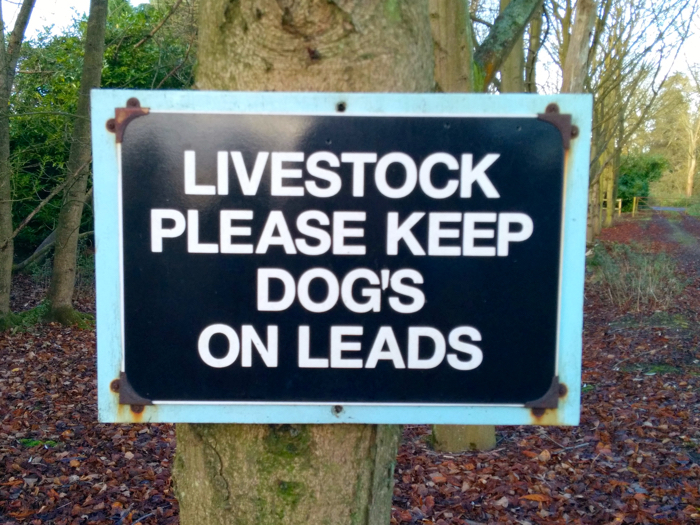
The function of punctuation
Chapter 4 from the book ‘A journalist’s guide to the use of English’
PUNCTUATION is designed to make reading easy. It is the written counterpart of those pauses and verbal inflections which make speech understandable. It also serves to separate sentences, phrases and words into orderly elements. Without correct punctuation written language becomes garbled.
The most important marks of punctuation are: The comma, the semi-colon, the colon and the full stop.
The comma
THIS marks short pauses. It is the most frequently used punctuation mark and also the most misused.
The comma is used:
1. In the place of and to separate a series of words of the same kind.
E.g. The reporter should always write clear, concise, accurate English.
(The words separated by commas are all adjectives defining English.)
The same rule applies to series of other words, provided they belong to the same part of speech.
E.g. She said the same to James, Michael, John and Alexander.
(The separations here are all between proper nouns in a series.)
2. Before and after :
(i) Words or phrases such as: however, for instance, in fact.
(ii) Alternatives.
E.g. His writing was more refined, more intellectual, than Smith’s.
3. To mark off:
(i) words in the vocative. E.g. John, don’t go yet.
(ii) words or phrases in apposition (i.e. a statement in parentheses). E.g. Elizabeth II, Queen of England, has four children.
(iii) Participial phrases.
E.g. Being unaware of the situation, he blundered on.
(iv) Absolute phrases. E.g. That being so, we shall go by train.
4. In double sentences:
(i) Where there are two subjects. E.g. He wanted to leave, but his friend detained him. He felt ill, and his friend had to help him.
(ii) Where there is only one subject, but two verbs, the inclusion of the comma is necessary to make the sentence easier to read. E.g. I visited Thomas and Perks and Marks and Spencers, and later went home.
5. In complex sentences to separate:
(i) qualifying phrases. E.g. In spite of your attempt at secrecy, I know what happened.
(ii) subordinate, non-defining clauses. E.g. The reporters, who were called in on their day off, worked quickly. BUT NOT in defining clauses. E.g. The house that Jack built.
The semi-colon
THE semi-colon marks a longer pause than that indicated by the comma, and it is used:
1. In double sentences, where there is no conjunction;
E.g. The rumour was that the king was dead; the people believed it.
2. In the same kind of sentence where the conjunction is expressed, but where the writer intends the reader to note a longer pause between statements than a comma would signify.
E.g. There will be an inquest, of course; but the matter will not end there.
3. To divide several parallel clauses.
E.g. The ship sank within minutes; all hands and passengers were lost; no wreckage was sighted.
The colon
THE difference between the semi-colon and the colon is that the latter is used when the writer wishes to indicate an even longer pause than that indicated by the semi-colon. It is used:
1. Always before opening quotes. E.g. The Mayor said: “I am glad to be here.”
2. Before listing articles, or people or ideas. E.g. He sold the lot: boat, tackle, mooring rights and fishing licences.
E.g. They rejected his views on all subjects: sex, love, literature, marriage, violence.
E.g. All of them were dead : Bill, Jack, Ted and Willie.
3. To distinguish between two co-ordinate clauses, where the second explains the first. E.g. Keep your language uncluttered: it reads more easily.
4. In a double sentence where the two ideas are in antithesis. E.g. Man proposes: God disposes.
The full stop
THE full stop denotes the end of a sentence. It is also used after initials and abbreviations, but check your HOUSE STYLE for newspaper practice varies.
Other marks
1. The exclamation mark.
Use this only when it forms part of a title (of a film, etc.) or after an exclamation.
E.g. A beard, you say!
2. The question mark.
This should be used after a direct query. E.g. He asked: “Are you coming?”
(Note the question mark is inside the quotation marks because the whole question is quoted.)
If the question is not part of the quotation it comes outside the quotation.
E.g. Have you read “Pilgrim’s Progress”?
3. Quotation marks (inverted commas).
Use these for titles of books, plays, etc., only where this is consistent with House Style.
Use these also for direct quotes. E.g. He asked: “Are you coming?”
Where a quote comes within a quote use single commas inside. E.g. He asked: “Have you read ‘Pilgrim’s Progress’?”
4. The parenthesis.
This can take the form of: (i) Brackets. E.g. If we believe (as we should) that syntax is important, we should master it.
(ii) The long dash. E.g. If we believe—as we should—that syntax is important, we should master it.
The long dash is to be preferred because it keeps the sentence more fluent.
5. The hyphen.
The hyphen, or short dash, is used:
(i) For compound nouns. E.g. mother-in-law.
(ii) For compound titles. E.g. Adjutant-general.
(iii) For compound nouns which are made up of verbs and prepositions. E.g. call-up, get-together.
(iv) To link a suffix with a proper noun. E.g. pre-Christian.
(v) For compound adjectives. E.g. a black-bearded beggar (the beggar has a black beard). NOT a black bearded beggar (this means the black beggar has a beard).
(vi) To link numbers. E.g. Ninety-nine.
(vii) To distinguish between meanings. E.g. Re-cover (cover again); recover (regain).
(viii) To avoid clumsy juxtapositions of vowels or consonants. E.g. co-operation, snail-like.
(ix) Where the word looks odd without the hyphen. E.g. NOT rerun BUT re-run.
6. The apostrophe.
This has two uses:
(i) To denote a missing letter (or letters). E.g. don’t, can’t fo’c’s’le.
(ii) As a mark to denote the genitive or possessive case. E.g. Jacob’s ladder.
Possessives
Rules:
1. Before the S if it is singular; after the S if it is plural (E.g. boy’s and boys’).
2. Where the plural changes the ending of the word and thus has no S, the apostrophe goes before the S which is added (E.g. man’s, men’s).
Following this rule can produce some clumsy possessives, but this is unavoidable.
You cannot write: Strauss’ waltzes. It must be: Strauss’s waltzes.
However, if two men named Strauss are involved, you don’t write:
Strauss’s waltzes or Strausss’ waltzes; you simplify it to Strauss’ waltzes, because the plural of Strauss is Strauss.
3. Avoid double apostrophes:
The Inkmakers’ Society’s conference (write: The conference of the Inkmakers’ Society).
4. Avoid clumsy possessives:
The Vicar of Downtown, the Rev Owen Brown’s book (again invert it: The book by the Rev Owen Brown, Vicar of Downtown).
5. Avoid confusion with quotation marks, particularly single quotes.
You cannot write: In ‘The Times’s’ opinion.
It should be; In the opinion of ‘The Times’.
N.B. Possessive of WHO is WHOSE not WHO’S. Possessive of IT is ITS not IT’S.
Revised by John Bottomley 2020
About this training module
Ted Bottomley and Anthony Loftus were both journalists and training managers at the Express & Star group of newspapers in the UK. The group has given this site permission to publish the module (above), which is one of six taken from the book ‘A journalist’s guide to the use of English’, first published in July 1971 but still relevant today. You can find links to all six chapters below.
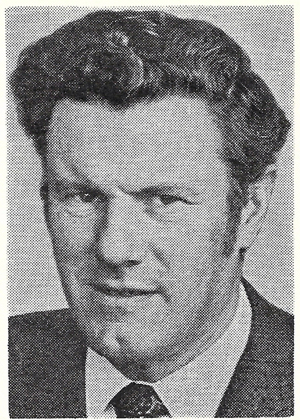 Ted Bottomley spent his whole working life in newspapers and more than 25 years in journalism. He was a former weekly newspaper editor, and had a long association with the National Council for the Training of Journalists. He was a member of the Publishing and Editorial Training Committee of the Printing & Publishing Industry Training Board. In the UK journalists still compete to try to win the prestigious ‘Ted Bottomley Award’.
Ted Bottomley spent his whole working life in newspapers and more than 25 years in journalism. He was a former weekly newspaper editor, and had a long association with the National Council for the Training of Journalists. He was a member of the Publishing and Editorial Training Committee of the Printing & Publishing Industry Training Board. In the UK journalists still compete to try to win the prestigious ‘Ted Bottomley Award’.
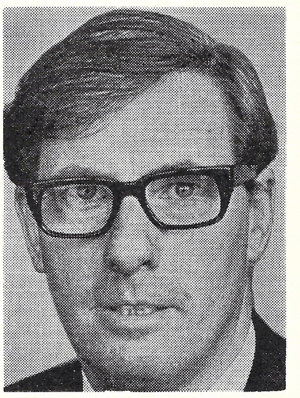 Anthony Loftus was a high court reporter and film and music critic before becoming the Editorial Training Officer of the Express & Star group. He was a member of the Institution of Training Officers and the Association of Lecturers in Journalism, and the chair of the West Midlands Regional Training Committee of the National Council for the Training of Journalists.
Anthony Loftus was a high court reporter and film and music critic before becoming the Editorial Training Officer of the Express & Star group. He was a member of the Institution of Training Officers and the Association of Lecturers in Journalism, and the chair of the West Midlands Regional Training Committee of the National Council for the Training of Journalists.
You can read more about the book, the men behind it, and how it has been revised and updated by Ted Bottomley’s son, John, a newspaper journalist for 40 years.
The six chapters of ‘A journalist’s guide to the use of English’
- Chapter 1: The use of English
- Chapter 2: The essence of style
- Chapter 3: Word Power
- Chapter 4: Spelling
- Chapter 5: Syntax and sentence construction
- Chapter 6: Punctuation




